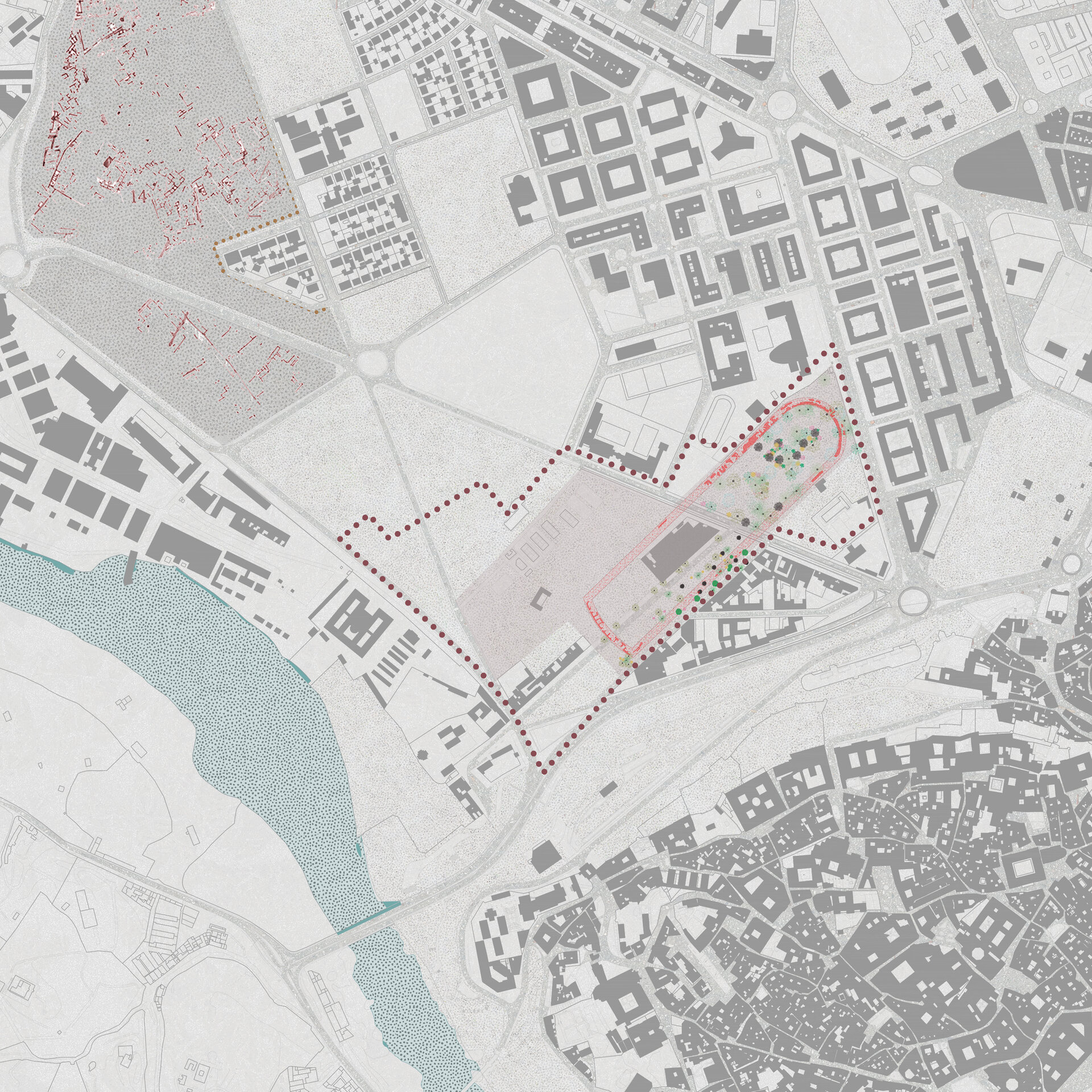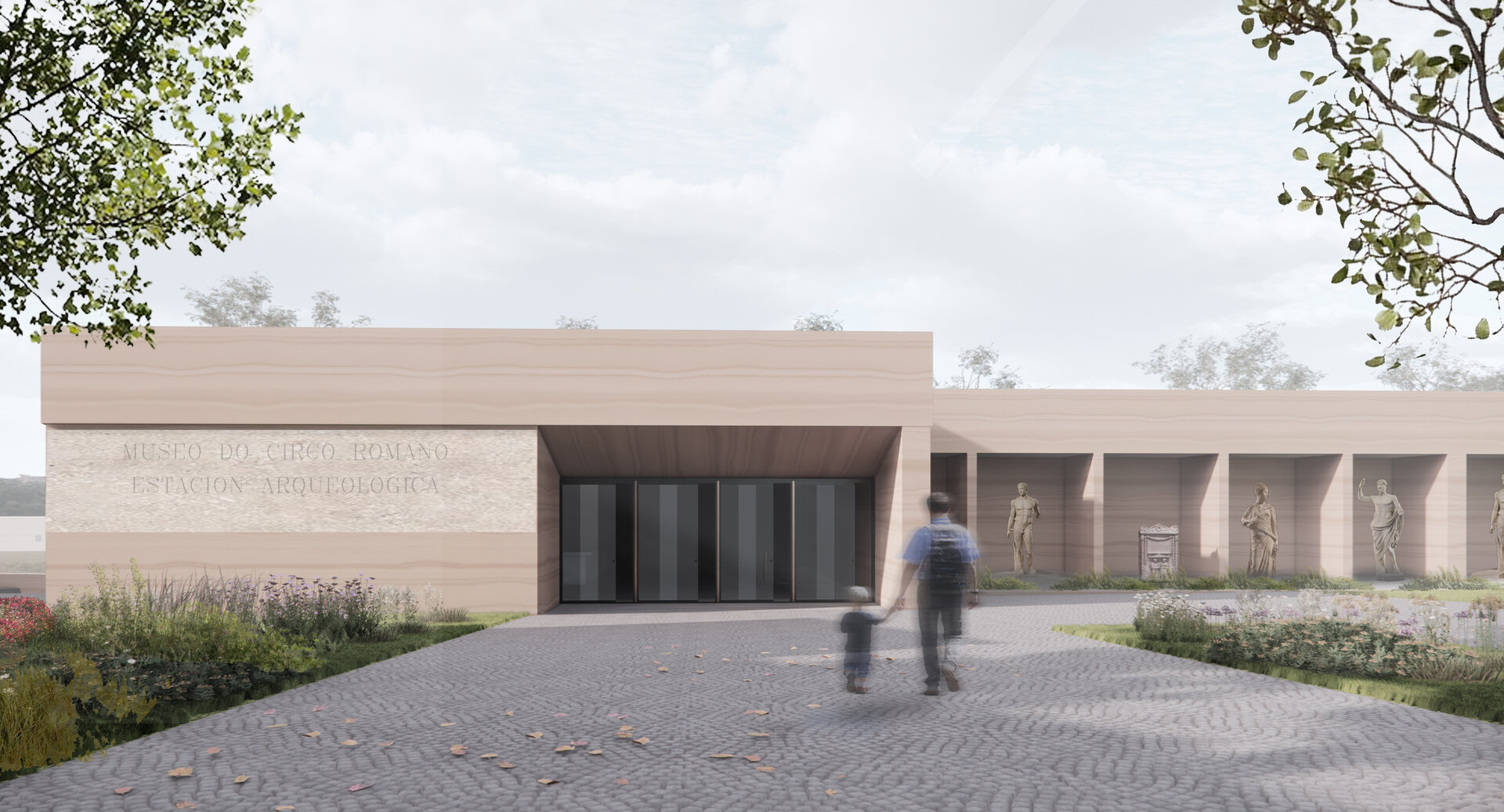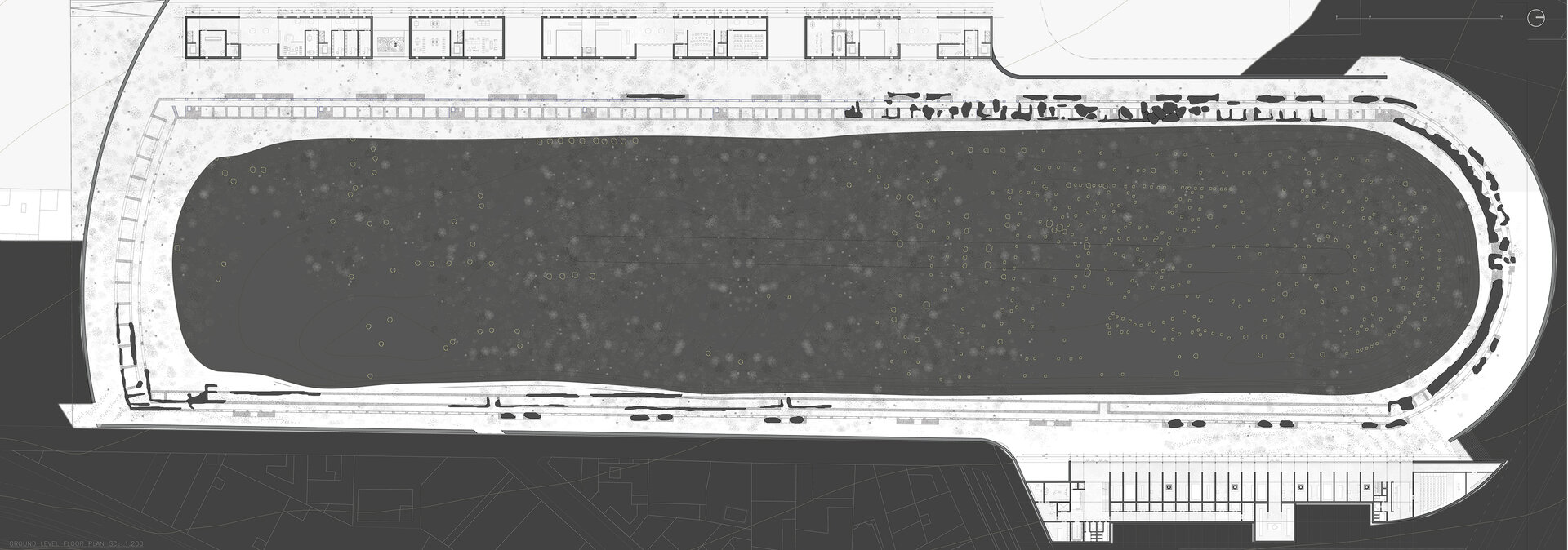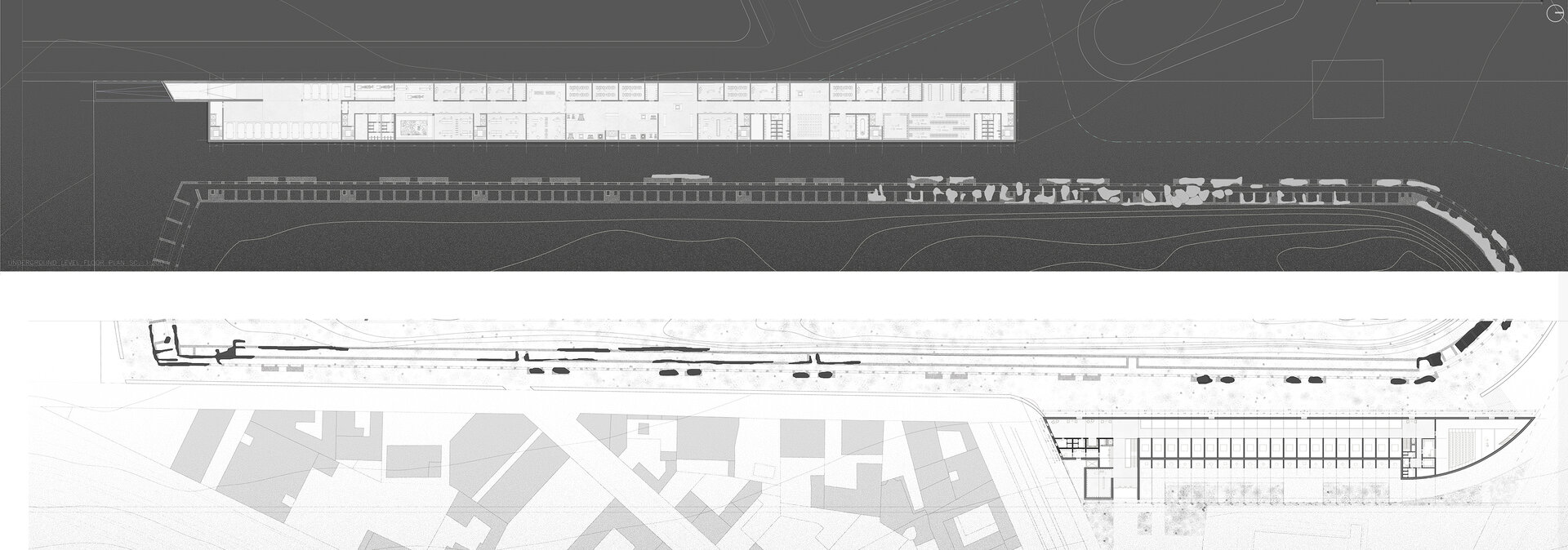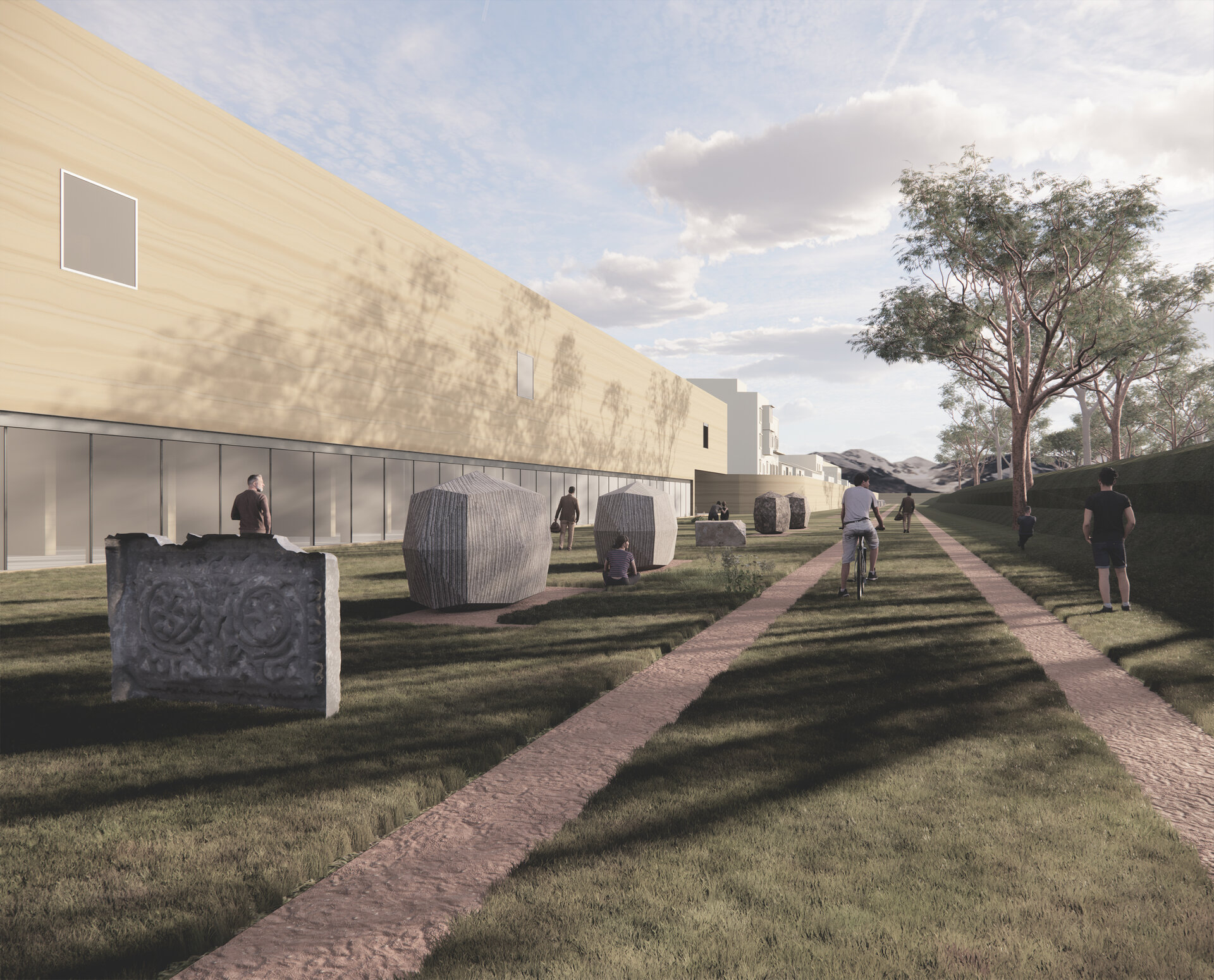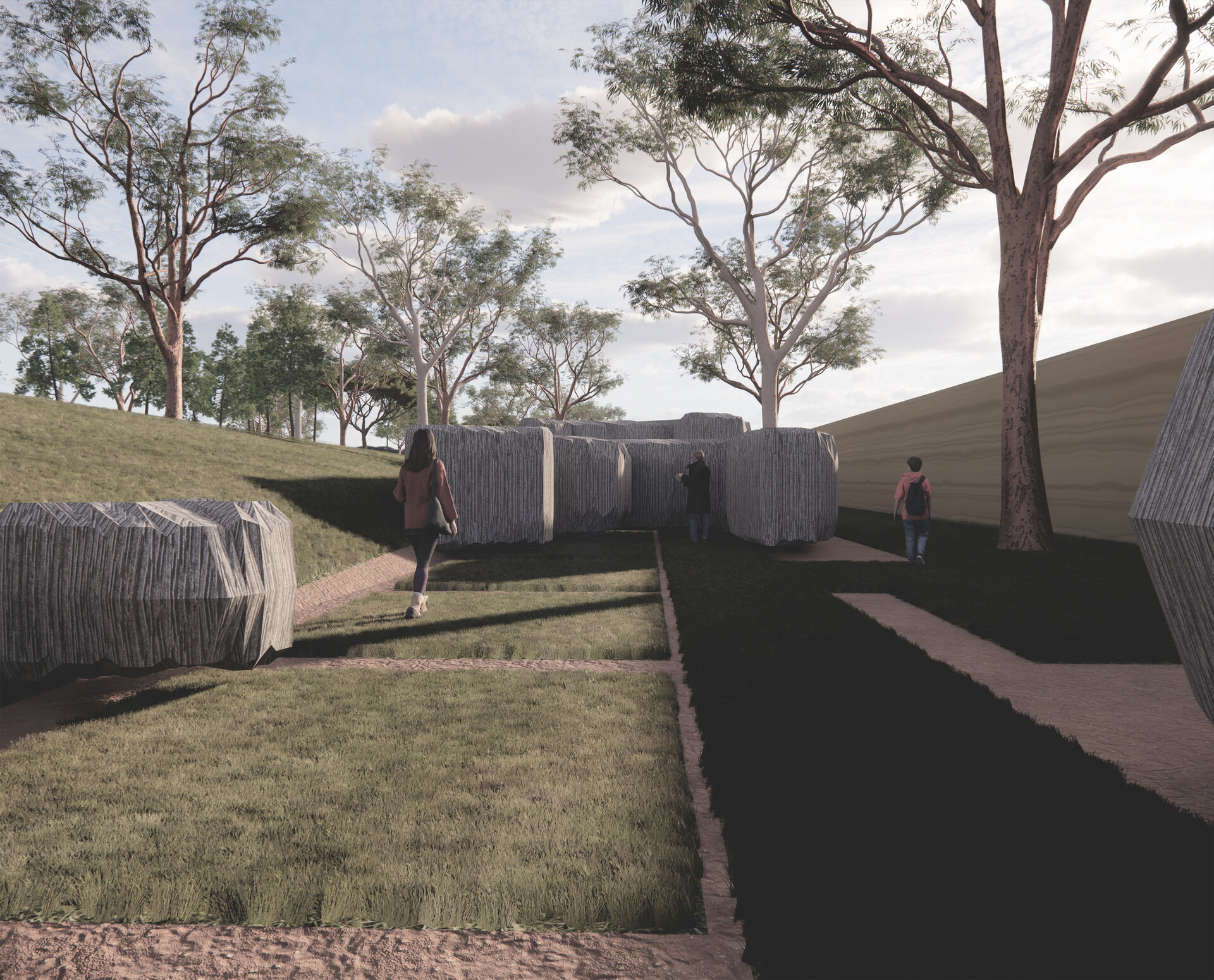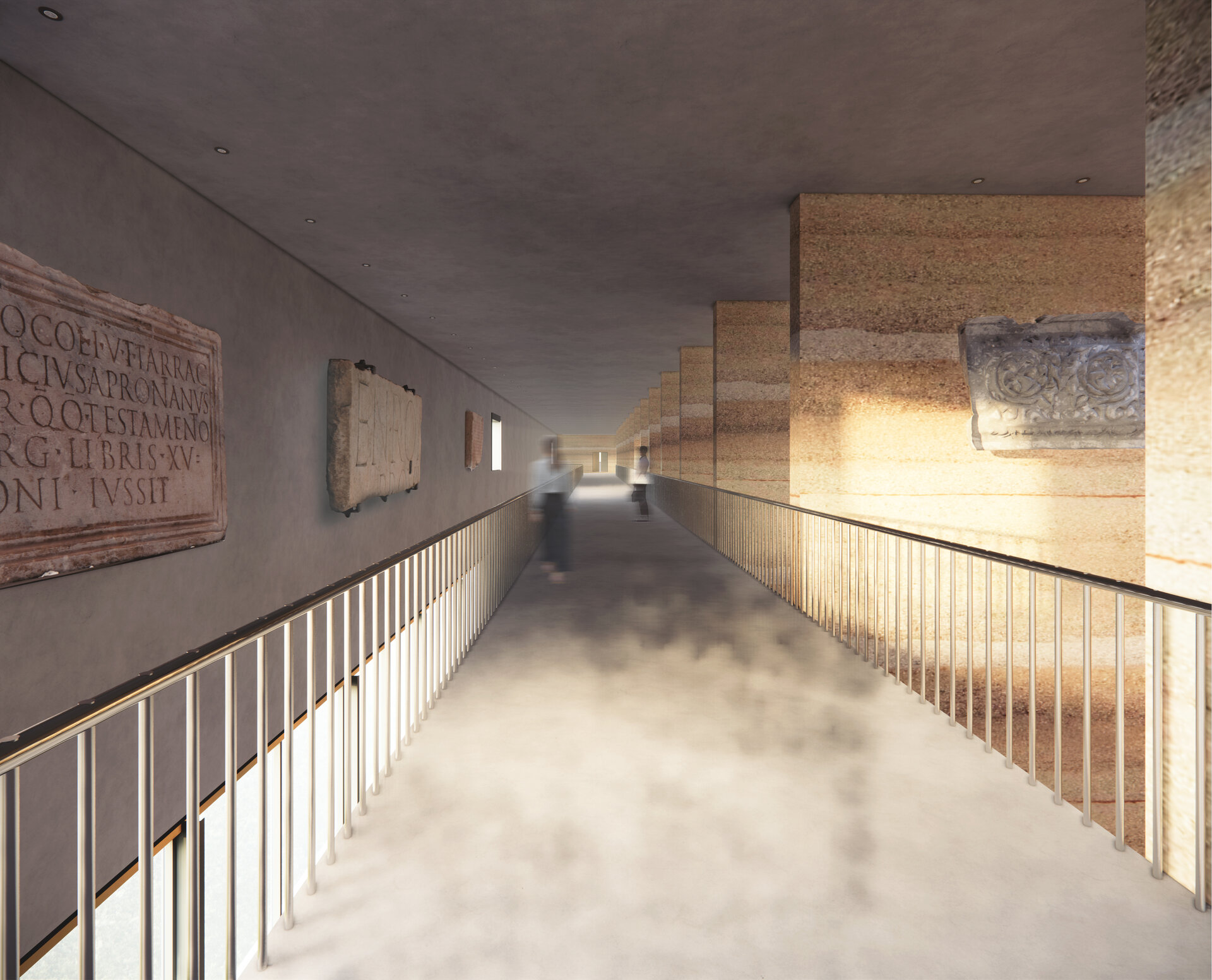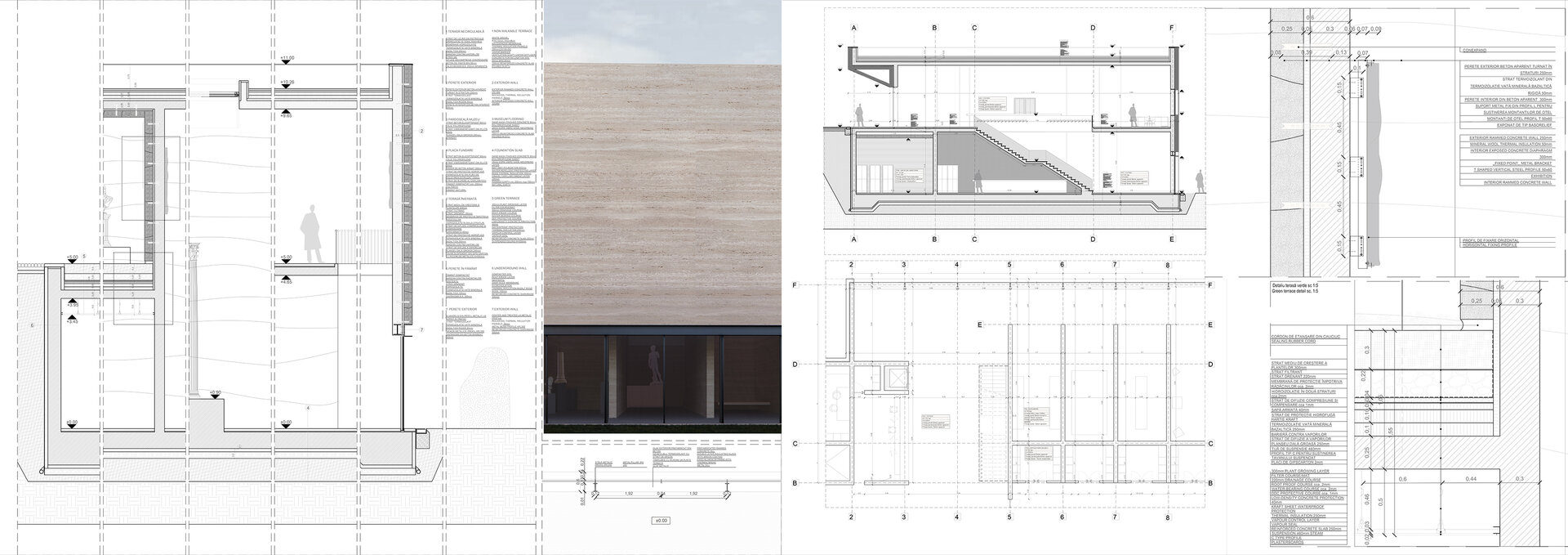
Antiquarium. Roman Circus of Toledo
Authors’ Comment
The site chosen for the diploma project is located in the city of Toledo, the old capital of Spain up until the 16th century. The study of the evolution of the city, its form and structure, the evolution of its principal functions, its specific definition of landscapes and integration of numerous types of architecture shows the overlapping of urban forms and types that survived throughout history, whose permanence is due to their correct integration in the topography and urban arrangement.
Located in the Vega Baja neighborhood, the roman circus represents one of the most important roman vestiges located in the city of Toledo and one of the best-preserved circuses located in Europe. Therefore, its importance not only for the city but as a cultural heritage, a witness, and an asset for the future evolutions of the city becomes one of the premises of the project, which aims to redefine the ruin from an abandoned archaeological site to an urban void, an enclosed space, a limit.
The antiquarian comes as an immediate response to the complexity of the site, which implies meanings such as protection, storage, research, display, and information.
The limit becomes a concept that determines the verification of the archaeological site as a whole, the main purpose being the architectural and urbanistic reorganization of the area by ensuring the overall perception of the site. In the end, the project bases itself on the realization of a spatial infrastructure whose purpose is the stimulation of the process of cultural anchoring of the site with the city itself and its communities. The architectural intervention will have as a basis concepts related to the recovery of the space, the interpretation of the archaeologic material as a whole, and as a generator of spaces, volumes and promenades.Therefore, the museum of the roman art and the research centre become closely related to the distribution of the roman circus, trying through elements related to architecture as gates, openings, courtyards and so on to evidentiate at a perceptive level the antic structure that presents itself on the site.
- Metaconnections
- Emergency center: Reintegration of the railway site C.F.R. Suceava in the contemporary circuit
- Social housing complex and Urban regeneration in the southern neighborhood
- Increasing the quality of life in a block of flats built under socialist administration - case study Soarelui neighborhood, Satu Mare
- Public intervention in the central market of Ploiești
- “Horia Bernea” School of painting
- Pinacoteca of the Anastasia Foundation - Malmaison
- Reintegration of the “Little Trianon” Palace in a contemporary circuit
- C Lab FI-LA-RET Campus-Laboratory of technological research in biomedical engineering
- Padina Mountain Center
- A church, a school, an intergenerational center
- Expo pavilions in Leonida Garden
- Apartment Building in the Protected Area no. 13, Dacia
- arhi-CULTURE. Cultural tourism in the Cave Ensamble in Buzău's Mountains
- Landscape for dance and the city. The new campus for ”Floria Capsali” School of Choreography - Rahova neighborhood, Bucharest
- Bucharest New Art Museum
- Student housing and public functions in a central protected area of Bucharest
- In between. Intermediate housing on Vaselor street, Bucharest. Vaselor Home Gardens
- Intermediate housing on Iacob Felix Entry
- Multifunctional Municipal Centre in Câmpina
- The Extension of the Folk Art Museum, Constanta
- Intergenerational learning center (eldery day care center & after-school)
- MLab-Development and Technological Transfer Center Assan's Mill
- Housing by the river
- Moara Răsărit, creative industries incubator
- Verdiales Romanian Parish Center, Malaga
- Saint Mary Institute - Library/ Foreign book study center
- Revitalizing Delfinului Food Market. A center for the community
- Antiquarium. Roman Circus of Toledo
- Revitalizing the Drăgășani wine and vine research center
